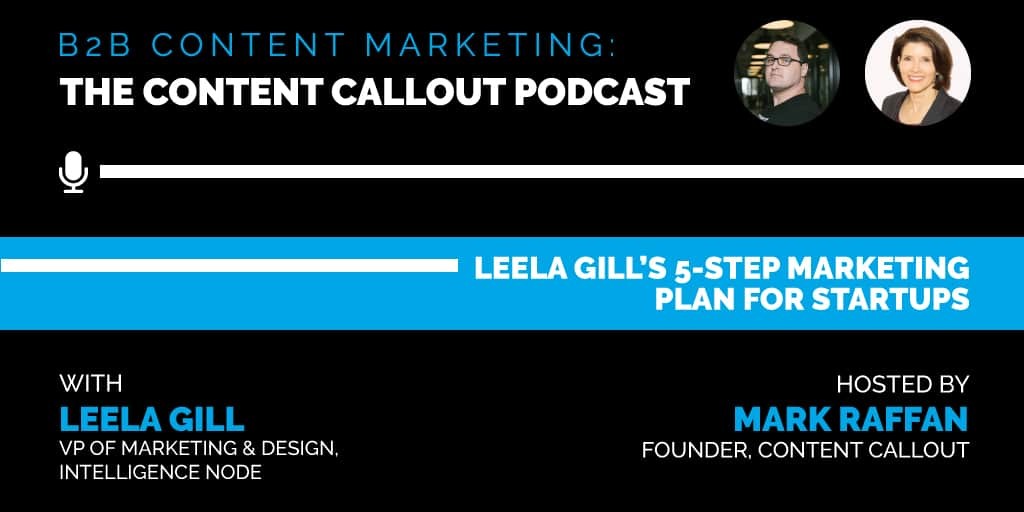By Leela Gill
5 MIN READ
3 Tips for Pitching Your Company to VC’s
Every entrepreneur needs money to create his/her business but deciding when to get institutional money (venture capital) can be a tricky question. If you go out for money at the wrong time, you may spend too much time talking and not enough time on your business – the result being unfulfilled capital goals and a lackluster business because you took your eye off the ball.
Here are three tips for pitching your company at the right time with the right message.
1. Hit Key Milestones First
The best time to go after institutional money is when you have accomplished the following milestones and need to accelerate sales:
- Business savvy experienced management team is in place (preferably working for equity)
- Technology is validated
- Market is large and growth rate is accelerating
- Customers expressed strong interest and/or are buying
- Sales cycle is understood and repeatable
- Financial model is believable and margins are respectable
Often venture capital companies will not consider an opportunity unless the business is looking for a minimum of $3 million with a greater than 10x return – hurdle rates you should keep in mind when deciding how much you need and when to exit.
2. Practice with Friends
To successfully pitch your company, you need to be prepared. Even the best serial entrepreneurs need to write down their growth strategy and practice their presentations. Don’t let your ego tell you otherwise. A few quick tips on getting started:
- Create and practice your 30-second “elevator” pitch
- Write a concise and easy to read executive summary (2 pages max)
- Document your business plan
- Create a 15-minute PowerPoint presentation and practice it in front of your friends – they will give you honest feedback.
3. Craft a Your Killer Presentation
A Venture Capitalist will know a good presentation as soon as they see the slides. Here are some tips to make your presentation sharp and differentiated.
- In the first slide, communicate why this is a great opportunity and why your product is better than the competition
- Stick to one slide per topic
- The title of each slide should explain the point you are making. For example, instead of “Obtainable market” write “$500M obtainable market”
- Keep slides simple (not too much text) and use 24-point font or larger
- Minimize the use of PowerPoint animations or other “bells and whistles.” A typical presentation deck outline includes the following slides:
Typical Presentation Outline
Slide 1: Company Overview
Simple direct, two or three statements describing the business, the market and your advantages.
Slide 2: Business Milestones to date
If there are several accomplishments to date, list them at the beginning of the presentation to build your company credibility.
Slide 3: Customer’s Problem Being Solved/ Value Proposition
This slide should answer the questions: Who is an important customer and why? What problem did the customer have before you arrived? Why was that their biggest problem?
Slide 4: Product/Solution/Technology (How you Solve Their Problem)
What is your solution and why is it unique?
Slide 5: Market Size and total obtainable market
What is the total market size and how much of it can you get? Investors need to know the market is large and even if you got a small market percentage you could become a big company.
Slide 6: Go to Market Strategy
Explain how you get in front of customers and how you will overcome barriers to reach the customer.
Slide 7: Customer Status
List current customers (it’s great to show logos) and length of the sales cycle. Is the sales cycling shortening and why?
Slide 8: Product Status
Discuss the current version of the product and future product development. Paint a picture for the entire product family, not just a single product.
Slide 9: Competition Overview
Generally, this is where your 2×2 matrix comes in to play, describing you versus the competition and how you are positioned to win.
Slide 10: Competition Specifics
Discuss the top 2 or 3 competitors, one/two liner on their story and why you beat them.
Slide 11: Team
Describe your top 3 to 5 people with one sub-bullet on relevant past (list accomplishments, not just where they worked). Explain why you and your team are perfectly suited to grow the business exponentially.
Slide 12: Financials
Show a simplified 5-year proforma. Key metrics on the vertical axis might include number of customers, revenue, COGS (as a percentage), gross margin (as a percentage), net income and % net income, EBITDA and % EBITDA, and cumulative cash flow. Don’t create an eye chart. Keep the numbers looking clean and simple so people can read the information.
Slide 13: Financing History/Deal
How much money went into the company so far, who are current investors, how much do they own. Our advice is not to suggest a valuation at this point – that is part of the negotiation after you know they think the business is a great one!
Slide 14: Capital Required/ Uses of Capital / Exit Strategy
How much are you looking for now; what do you plan to use it for; potential exits for investors.
Slide 15: Contact
This is the slide you will leave up on the screen with who to contact. Make sure your phone and email are on it.
Conclusion
These tips just scratch the surface of a formal process that Alta Mira Marketing knows well. We would be delighted to help you reach your capital goals and guide you through the process. Please contact us if you have questions!
Related Posts:
Influencers, Brand Ambassadors and Raving Fans – and Why You Need All Three
For marketers, influencers, brand ambassadors, and raving fans can create a significant differentiator…
Marketing as a Revenue Generator and Catalyst for Change
Marketing is a change catalyst, calling customers to change and jump on, and it also helps the organization…
A Guide To Navigating Startups as a Marketing Leader
It can’t be understated: Being a marketing leader of a startup can be crazy and chaotic. Out of the million…
A 5-Step Marketing Plan for Startups
As a marketing professional working in a startup, do you know how to help your company grow revenue? How is…
Building A Diverse And Equitable Business: The Role Of Marketing
Jesse Jackson once said, “Inclusion is not a matter of political correctness. It is the key to growth.” This…
B2B Marketing: What We Can Do To Help Save The Planet
The COVID-19 pandemic is the biggest business challenge of a generation. Organizations scramble to establish…
The Interplay of Demand Gen and Content with Leela Gill
The COVID-19 pandemic is the biggest business challenge of a generation. Organizations scramble to establish…
Early-Stage Marketing: A Five-Point Leadership Framework
The COVID-19 pandemic is the biggest business challenge of a generation. Organizations scramble to establish…
Social Media: Getting Above the Noise
The COVID-19 pandemic is the biggest business challenge of a generation. Organizations scramble to establish…









